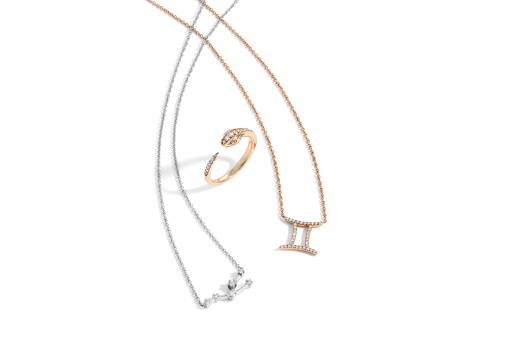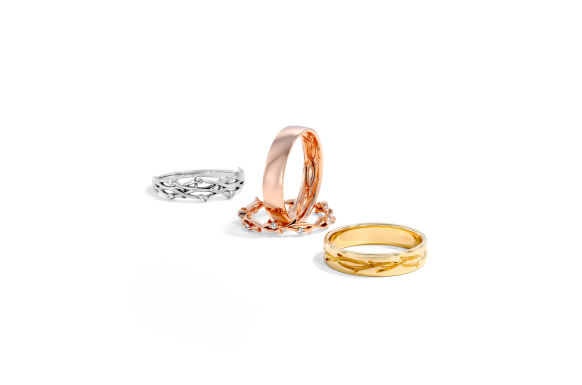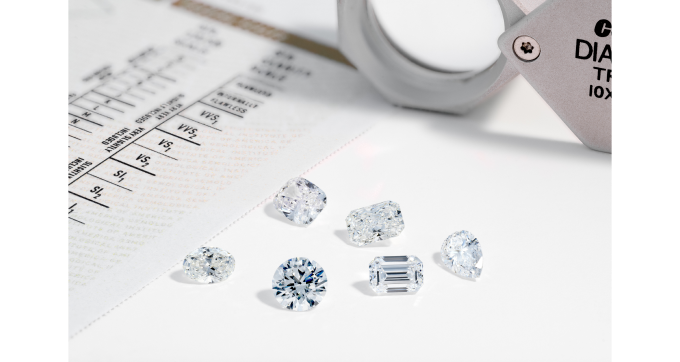You're on the lookout for that perfect diamond ring. It's a huge decision and one that's as exciting as it is daunting. We totally get it. You want something that not only looks stunning on your finger but also holds a deeper meaning for you.
In this blog, we’ll talk about why a natural diamond engagement ring could be exactly what you’re looking for. Natural diamonds have been captivating hearts for centuries, and their popularity in engagement rings hasn’t faded one bit. Today, the average carat weight for a natural diamond engagement ring varies, with couples in the United States, the UK, and Europe preferring those between 0.5 to 1 carat.
Ready to uncover some glittering reasons why they might just be your dream choice? Let’s go!
All About Natural Diamonds
Natural diamonds are sparkling gems formed deep within the Earth's mantle. They are created under extreme pressure and heat over billions of years. Mining these treasures is an intricate process, often requiring vast resources to extract them from kimberlite pipes, where they are most commonly found.
Although diamonds have a rich history, their role in engagement rings dates back to 1477, when Archduke Maximilian of Austria presented a diamond ring to Mary of Burgundy. This gesture started a trend among European aristocracy and eventually became a global symbol of commitment and love.
Understanding the 4Cs
When purchasing diamonds, it's essential to understand the 4Cs: Cut, Color, Clarity, and Carat weight. Each of these attributes significantly influences a diamond's beauty and value.
Cut: A diamond's cut is one of the most important factors affecting its beauty. This doesn't refer to the shape of the diamond (like round, oval, or cushion) but to how well the diamond has been cut and shaped from its rough form. A well-cut diamond will have superior brilliance, sparkle, and fire.
Color: Color in diamonds is typically assessed on a scale ranging from D (colorless) to Z (light yellow or brown). The closer a diamond is to being colorless, the higher its value, with D-grade diamonds being the most sought-after. These color distinctions, often subtle, significantly impact a diamond's value.
Clarity: Clarity refers to the presence (or absence) of inclusions and blemishes in a diamond. Diamonds with higher clarity grades are more valuable, though many inclusions and blemishes are microscopic and do not affect a diamond's beauty to the naked eye.
Carat Weight: Carat weight is the measure of a diamond's size. Carat weight also influences a diamond's price exponentially; for example, a two-carat diamond will cost significantly more than twice a one-carat diamond due to its rarity.
Popular Diamond Cuts
Among the various diamond cuts available, three stand out as the most popular: the round brilliant, oval, and cushion cuts. Each of these cuts has unique characteristics that cater to different styles and preferences, making them a favored choice for those seeking both elegance and sparkle in their jewelry.
Round Brilliant Cut: The round brilliant cut is the epitome of classic diamond elegance and is the most popular diamond shape for engagement rings. Renowned for its unparalleled brilliance, this cut features 58 facets that are precisely arranged to maximize light reflection.
Oval Cut: The oval cut is a beautiful blend of elegance and innovation. It maintains a similar level of brilliance to the round cut, but its elongated shape can make the finger appear longer and slimmer.
Cushion Cut: The cushion cut (which may include also elongated cushions) is a romantic and vintage-inspired choice, characterized by soft corners and a square or rectangular shape. This cut combines the old-world charm of antique cuts with the modern brilliance achieved by newer cutting techniques.
These aren’t the only options, though- there’s also pear, marquise, radiant, and other cuts that add style and glamor to your engagement ring. Whichever cut captures your heart (by the way, there are heart-shaped diamonds!) is a winner!
Diamond Carat Trends in Engagement Rings
At the beginning, we pointed out that the average carat size for natural diamond engagement rings is 0.5 to 1 carat. This size range offers a perfect balance of visual impact and affordability, making it a preferred choice for many couples. While these compact diamonds are gorgeous in all ring styles, they’re especially show-stopping in settings that maximize their size and sparkle. Examples include the following:
Pave: With pave engagement rings, the band is lined with tiny diamonds closely set together, creating a dazzling effect. Designs like The Pave Kamellie bring a luxurious feel to the ring, drawing attention to the delicate beauty of the central diamond.
Halo: Halo engagement rings feature a center diamond surrounded by a circle of smaller stones, creating a 'halo' effect. With rings like The Kylie, the brilliance of the halo draws all attention to the central stone, making it appear larger and more luminous.
Side Stone: Side stone rings like The Hidden Halo Penelope feature smaller diamonds flanking the central stone on either side. This arrangement not only showcases the central diamond but also adds a distinctive charm to the overall design.
Three-Stone: With three-stone rings like The Liv or The Twig, the central diamond is flanked by two slightly smaller stones. The trio of diamonds in a three-stone setting work in concert to enhance each other’s sparkle, giving prominence and depth to smaller gemstones.
Each of these styles brings out the best in natural diamonds, making them an exquisite choice for an engagement ring.
You’ve Got Sustainable Choices!
For centuries, natural diamonds have been the most common choice for engagement rings. Although this is still the case, they have had a bit of a bad rap in recent years due to concerns over ethical sourcing.
The good news is that today, 99.8% of diamonds mined are supervised by the Kimberley Process, a system designed to eliminate the trade in ‘conflict diamonds’. At Keyzar, we make sure that all the diamonds we buy and use are certified under the Kimberley Process. It's not just about looking good; it's about doing good too.
Balancing Dreams and Budgets – Lab Diamonds vs. Natural Diamonds
If you're dreaming of a bigger stone but need to stick to a budget, lab diamonds could be your perfect match.
Here's the scoop: lab diamonds usually cost about 30-60% less than natural diamonds of a similar size. For instance, if you've got your heart set on something really impressive, like a 3-carat stone, but find the price of natural diamonds a bit steep, lab diamonds offer a fantastic alternative.
To put it into perspective, a 1 carat VS1 natural diamond might set you back around $3,000. But for that same price, you could score a stunning 3-carat VS2 lab diamond! It's a great way to get more bling for your buck and still have a gorgeous, eye-catching ring.
Wrapping It Up
Choosing a diamond ring is a big, exciting step! Whether you lean towards the timeless shimmer of a natural diamond or the affordability of a lab-grown gem, it's all about choosing something that you love.
At Keyzar, we offer both options in a wide range of beautiful settings, and designing your dream ring is as simple as clicking all the right choices. If you prefer advice and assistance from a professional, you’re welcome to schedule a consultation with one of our diamond experts. Wishing you a happy and fulfilling journey to finding your dream ring!






